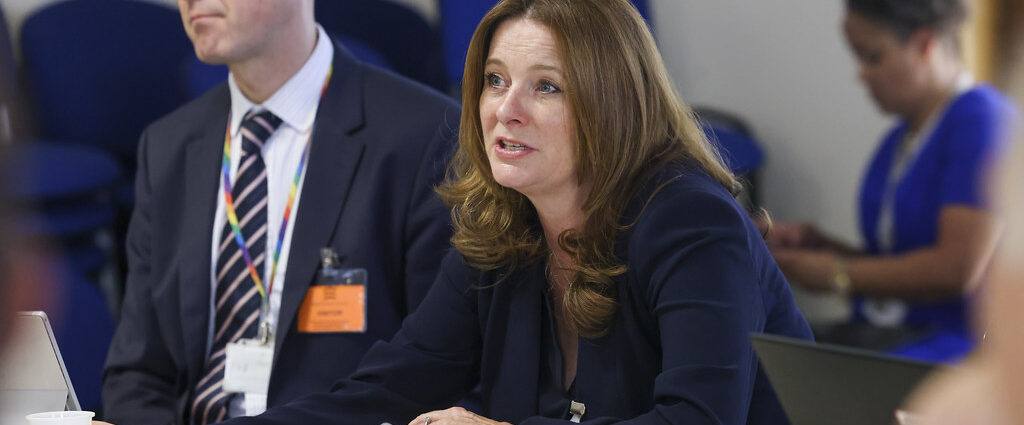Kara Hall
The Department of Education has released a list of 147 schools with collapse-prone concrete in England, amidst mounting pressures over delayed back-to-school starts.
Nineteen schools, responsible for 11,150 pupils, have delayed the start of their Autumn term due to Reinforced Autoclaved Aerated Concrete (RAAC).
Another four schools, responsible for 2,938 pupils, have had to return to remote learning amidst concerns.
The number of schools forced to close buildings because they contain crumbling concrete could rise. Back in February @JaneDodgeC4 exposed the dangers of RAAC concrete for @Channel4News pic.twitter.com/EJW3pqKYhV
— Channel 4 News (@Channel4News) September 1, 2023
What is RAAC?
Reinforced Autoclaved Aerated Concrete is a concrete often found in public buildings and schools in England, used mainly for roofing. Informally named ‘Aero bar’, the concrete is bubbly, rather than filled with material.
This makes the concrete cheaper to produce, more lightweight, and easier to install. However, the concrete can become crumbly over time and prone to collapse, with an added 30-year life span.
For schools in England, this has created unsafe teaching environments for educators and students.
What does the concrete crisis mean for students in England?
With remote learning making a return and temporary buildings being used for teaching, many pupils across England will have their education impacted by the concrete crisis.
More than 100,000 pupils attend the 147 schools affected by RAAC mitigations.
The National Education Union (NEU) has described the situation as “absolutely disgraceful” and warned of “massive disruption to the education of thousands of children.”
Today we’ve published new guidance for education settings impacted by Reinforced Autoclaved Aerated Concrete (RAAC).
Here’s everything you need to know about RAAC and how we’re supporting schools and colleges to manage it safely ⬇️https://t.co/3ZaKz89MtK
— Department for Education (@educationgovuk) August 31, 2023
Although the Department of Education has now published “guidance for education settings,” education unions say “hundreds more” schools in England could be affected by the crumbling concrete.
The Department of Education’s list of schools only included schools where surveyors had found the concrete as of August 3oth. Those who had confirmed later, or had their minimize surveys, were not included. Many schools with RAAC may have been left out of the DoE’s list.
Who is to blame for the concrete crisis?
Critics of the Conservative government have blamed Prime Minister Rishi Sunak and members of his cabinet for ignoring the problem of RAAC in British schools.
Although the concrete has been a problem in successive governments, Conservative administrations since 2010 have drastically reduced the budget for school renovations and rebuilds.
In fact, whilst Chancellor of the Exchequer, Rishi Sunak was asked for funding to rebuild between 300 and 400 schools. This was due to claims by the Department of Education that RAAC posed a “critical risk to life.” Sunak originally funded 100 schools, later halving this to 50.
I chaired a meeting this morning on RAAC in schools.
I understand the anxiety families feel and want to reassure parents that a vast majority of schools are unaffected.
We've put in place extensive help for affected schools to minimise disruption.
— Rishi Sunak (@RishiSunak) September 4, 2023
As the Conservative government continues to come under fire, it has come to light that 36 of the schools are in the seats of government frontbenchers. 13 of these are in cabinet members’ seats. In total, 109 are in constituencies with Conservative MPs.
What now?
Since the Department of Education’s list of 147 schools was released last week, several hundred surveys have been carried out to find schools containing collapse-prone concrete in England.
The Department of Education’s Secretary Susan Acland-Hood and Chief Operating Officer Jane Cunliffe appeared before the Public Accounts Committee of MPs on Monday afternoon.
The officials declined to offer a figure for the number of pupils affected by the crisis so far, but have defended the “co-ordinated” cross-government approach.
Dame Meg Hillier, who chairs the Public Accounts Committee (PAC), said it was “disappointing” that officials could not provide MP’s with more specific figures.
READ MORE:
-
THE NATIONWIDE STUDENT HOUSING CRISIS
-
BIBBY STOCKHOLM: THE STORY BEHIND THE DISASTER
-
CONSERVATIVE LEADERSHIP CONTEST: RISHI SUNAK BECOMES UK’S NEW PRIME MINISTER
Featured image courtesy of UK Government via Flickr. No changes were made to this image. Image license found here.

